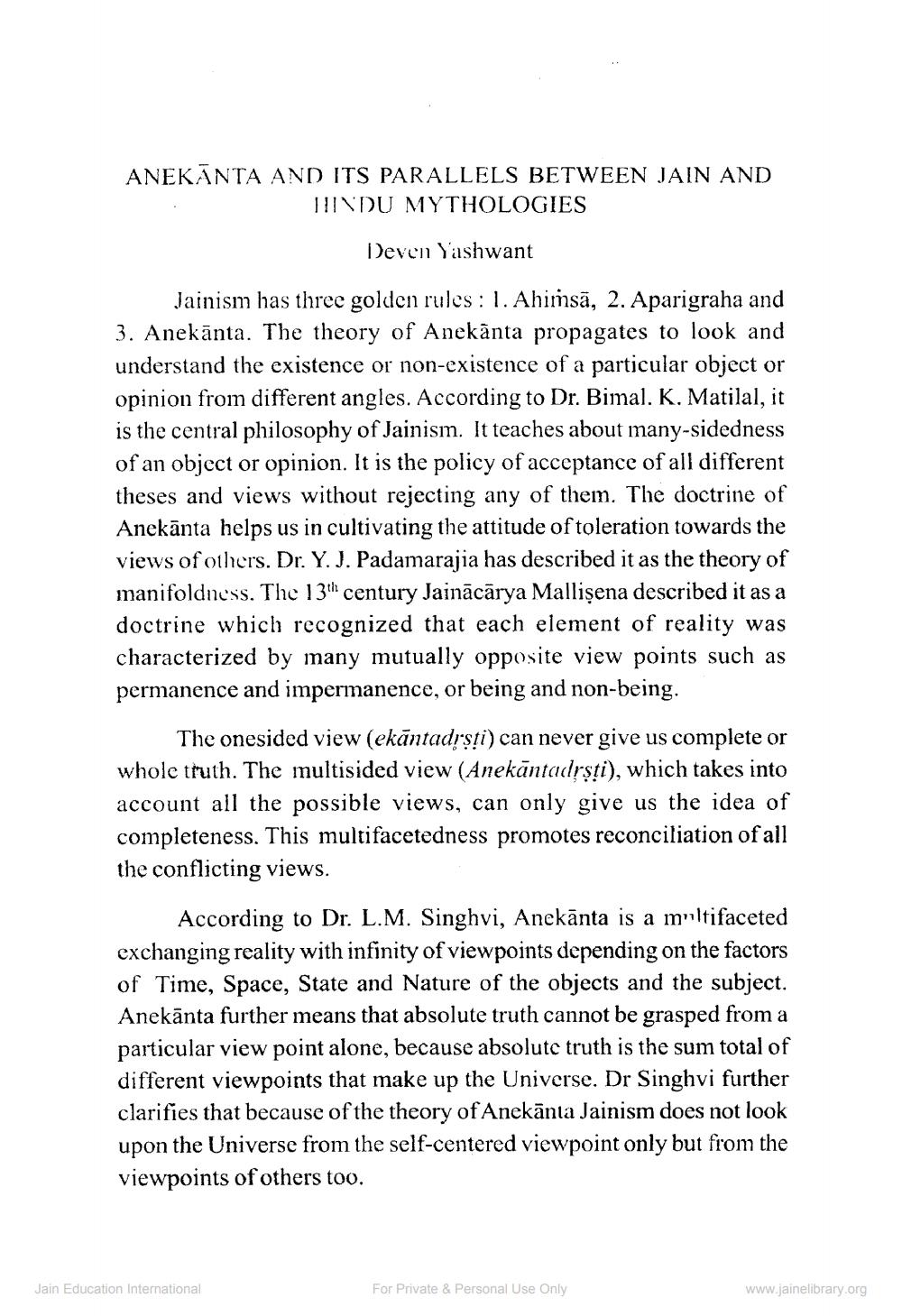________________
ANEKANTA AND ITS PARALLELS BETWEEN JAIN AND
TILVDU MYTHOLOGIES
Deven Yashwant
Jainism has three golden rules: 1. Ahimsā, 2. Aparigraha and 3. Anekānta. The theory of Anekānta propagates to look and understand the existence or non-existence of a particular object or opinion from different angles. According to Dr. Bimal. K. Matilal, it is the central philosophy of Jainism. It teaches about many-sidedness of an object or opinion. It is the policy of acceptance of all different theses and views without rejecting any of them. The doctrine of Anekānta helps us in cultivating the attitude of toleration towards the views of others. Dr. Y. J. Padamarajia has described it as the theory of manifoldness. The 13th century Jainācārya Mallisena described it as a doctrine which recognized that each element of reality was characterized by many mutually opposite view points such as permanence and impermanence, or being and non-being.
The onesided view (ekāntadỊsti) can never give us complete or whole truth. The multisided view (Anekāntadsti), which takes into account all the possible views, can only give us the idea of completeness. This multifacetedness promotes reconciliation of all the conflicting views.
According to Dr. L.M. Singhvi, Anekānta is a multifaceted exchanging reality with infinity of viewpoints depending on the factors of Time, Space, State and Nature of the objects and the subject. Anekānta further means that absolute truth cannot be grasped from a particular view point alone, because absolute truth is the sum total of different viewpoints that make up the Universe. Dr Singhvi further clarifies that because of the theory of Anekānta Jainism does not look upon the Universe from the self-centered viewpoint only but from the viewpoints of others too.
Jain Education International
For Private & Personal Use Only
www.jainelibrary.org




